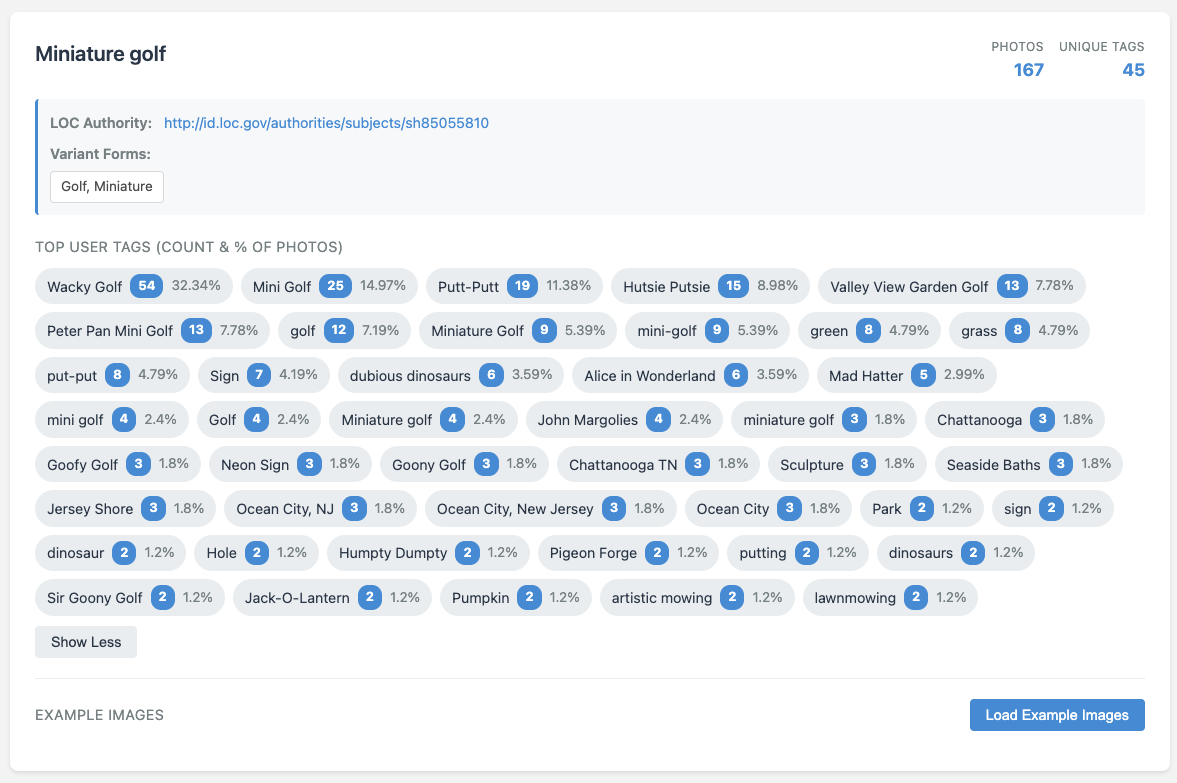Library of Congress & Flickr Commons
Analysis of user interactions on 40,000 images
Oct 6 2025

Intro
Flickr Commons is a program to bring the visual collections of cultural heritage organizations to new audiences. Getting these resources in front of people where they are online as opposed to being siloed in their own website or not online at all. It was a pretty ground breaking project, the Library of Congress was the first participant with over 40,000 photos now on Flickr. The program continues today under the Flickr Foundation. Starting in 2008 there is a lot of information about the project, this webcast, a project report, and a 2024 impact report. While the project predates my time at the library by a decade and I have nothing to do with these collections with my job at LC I was really compelled by having potentially 17 years of data about interactions between the public and these materials. This post is going to analyze and visualize that data.
Data + Code
I’ll be using data from the public Flickr API that I harvested back in 2024 (I unreliably work on too many personal projects for years and then eventually something will cause me to finish one, like being furloughed in a US government shutdown). So this is all public data, and the code I use to do everything on this page can be found in this Github repo.
Interactions
The comments are the big thing with this project. They are the largest interaction surface between the public and the photos. With over 95,000 comments made on the photos over the 17 years there are a lot of questions in my mind as to what people are saying. To organize them I built embeddings for all 95K comments using the Google Gemini gemini-embedding-001 model. This produces a 3072-dimensional vector for each comment which I then reduced to two-dimensional space and ran some clustering over them to build communities of comments. I then sent a random sample of each off to a LLM to classify them into a group based on the actual text of the comments. Here are the communities:
Category ID Count Category Label ================================================================================ 0 4464 Historical Context and Identification with Links 1 2782 Aesthetic Praise and Admiration 2 1973 Biographical & Historical Wikimedia Contributions 3 3765 Factual Historical Annotation 4 5553 Historical Detail Identification and Contextualization 5 678 Explore Congratulations 6 595 See Also 7 1402 Historical Subject Identification and Details 8 2529 Location and Status Verification 9 202 Aesthetic Feedback 10 4754 LC Staff Thanks for Metadata Improvement 11 1204 Non-English Compliments 12 629 Flickr Group Invitations 13 1770 Crowdsourced Historical Data Refinement 14 4230 Historical Performing Artist Biographical Documentation 15 3469 Sourced Historical Details and Context 16 335 Flickr Group Invitations 17 1687 Flickr Group Invitations 18 3315 Location Verification and Contemporary Comparison 19 1054 Cross-referencing and Linked Information 20 466 External Content Feature Notification 21 6199 Observations on Period Appearance 22 2806 LC Staff Thanks for Contributions 23 954 Wikidata Zone 💪 24 2571 Factual Correction and Archival Enhancement 25 1620 Historical Factual Identification and Context 26 2130 Historical Baseball Identification and Contextualization 27 296 Flickr Group Invitations 28 3402 Factual contributions and corrections 29 4184 Factual Identification and Historical Context 30 661 Group Invitations 31 270 Identification and Biographical Information of Historical Figures 32 7373 Historical Photo Annotation 33 5265 Biographical and Genealogical Identification 34 372 Flickr Group Invitations 35 5487 Praise 36 4659 Historical Annotation 37 223 Compliments ================================================================================ Total: 95328
I then created a visualization to display all of these comments. Once loaded you can hover over the comment to see the text, if you click it will take you to that comment on Flickr. Probably does not work well on mobile. Explore the communites below or Open in new tab
